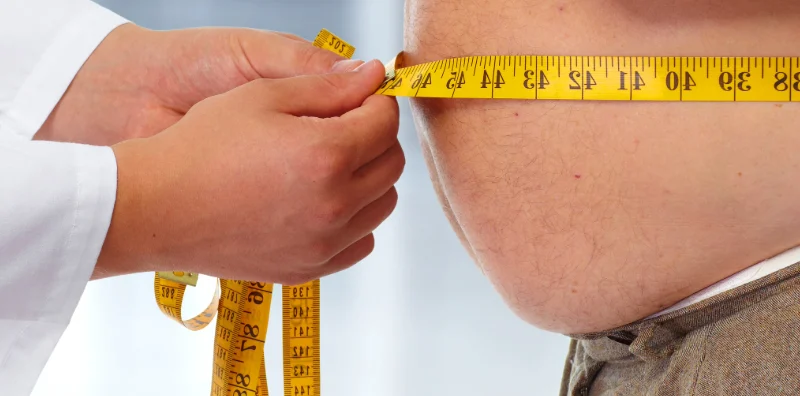The human body is very fragile. You can go without breathing for about three minutes. You can go without water for about three days. Beyond those time limits, you are likely to die.
But how long can you go without food? It depends on how fat you were before starting your fast. Why is that important? It’s because your excess body fat can be used to maintain life. This is why animals that hibernate during the winter can emerge thinner, yet alive, in the spring. Their excess body fat can be converted to fatty acids to make ATP to keep them alive. Furthermore, their excess body fat can also be transformed by the liver into ketone bodies, which can serve as a poor substitute for glucose needed for brain function.
Hibernation is a 3-month fast. Can it work for humans? The longest medically supervised fast in the literature is 382 days (1). This was done in 1965 by Angus Barbieri. During this period, he consumed only water, vitamins, yeast (a source of essential amino acids), tea and coffee (sources of polyphenols), and potassium supplements. After the first 100 days of his fast, the rate of lean body mass loss accelerated as his body fat reserves were depleted. In the last eight months of his fast, his blood glucose levels were around 30mg/dL, which is about 2-3 times lower than normal. Such low blood glucose levels would be considered severe hypoglycemia.
Having blood sugar levels that low would usually send a person to the hospital in a coma. This is not the type of weight-loss program most physicians would recommend. Nonetheless, his weight decreased from 456 pounds to 180 pounds. This means he lost 276 pounds, which corresponds to 60 percent of his initial weight. This is vastly greater than the weight loss induced by any GLP-1 drug in essentially the same period of time (2). However, might there be a better way?
Let’s take a look at the heaviest man in the world, as determined by the Guinness Book of World Records. This would be Manuel Uribe. When I first met Manuel in 2007, he weighed 1,232 pounds. This makes Angus Barbieri look like a lightweight in comparison. Working with his Mexican physicians, we put Manuel on a strict Zone diet of about 1,200 calories per day. Since Manuel couldn’t get out of bed, his mother made all the Zone meals for him. In addition, we added 16 grams of EPA and DHA daily to his Zone diet, making Manuel my first subject in testing the ability of Metabolic Engineering® to treat obesity.
So, what happened? After two years (720 days), Manuel’s weight had dropped to 994 pounds, or a 19 percent loss. But what about his vital signs? His total blood cholesterol was normal at 190 mg/dL, his blood pressure was normal at 120/70, his blood glucose was normal at 88 mg/dL, and his heart rate was 62 beats per minute. Five and a half years after we started working with Manuel, his weight had decreased by 440 pounds, representing a 36% weight loss. In fact, Manuel’s total weight loss was nearly equal to the starting weight of Angus Barbieri. Of course, all of Manuel’s physiological parameters remained normal. A data point of one, but a very dramatic indication of what Metabolic Engineering® can achieve with compliance.

References:
1. Stewart WK, Fleming LW. Features of a successful therapeutic fast of 382 days’ duration. Postgrad Med J. 49:203-209 (1973). doi: 10.1136/pgmj.49.569.203.
2. Wilding JPH, Batterham RL, Calanna S, Davies M, Van Gaal LF, Lingvay I, McGowan BM, Rosenstock J, Tran MTD, Wadden TA, Wharton S, Yokote K, Zeuthen N, Kushner RF; STEP 1 Study Group. Once-weekly semaglutide in adults with overweight or obesity. N Engl J Med. 384:989-1002 (2021). doi: 10.1056/NEJMoa2032183.




